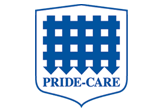BEETLE INFESTATION
With have 30 years experience in the remedial treatment industry specialising in the prevention and treatment market.
Pride-Care have the qualifications, trained operatives and excellent customer service to ensure that your timber preservation, restoration and any infestation removal requirements are handled and dealt with in a prompt and professional way.



(Anobium punctatum) Common Furniture Beetle. Responsible for about 75% of all woodworm damage to property, attacking both soft and hard woods. The adult beetle is approx 3mm long and chocolate brown coloured. It is able to fly. Up to 80 eggs are layed and the life cycle averages 3 years. Flight holes are 2mm dia.

(Pentarthrum huttoni) Established in post war Britain but already widespread and associated with wet rot decay. The adult is 3-5mm long, blackish brown and identifiable by its long 'snout'. Normally associated with damp timber and appears to have two overlapping life cycles in the year. Flight holes are small 1mm dia and ragged.

(Hylotrupes bajulus) House Longhorn Beetle.This large insect is found mainly in the southern Home Counties. It attacks only softwood but because of its size and ability to bore extensively through sapwood and into heartwood, the damage caused is rapid and severe. It is greyish brown to black, has a life cycle of 5-11 years and can reach 25mm long. Flight holes are oval up to 9mm by 6mm. Up to 200 eggs are laid.

(Xestobium rufovillosum) The most damaging wood borer in old buildings, attacking hardwood and often found in timbers also suffering from fungal decay. Larger than the Common Furniture Beetle at 6 to 8mm long and greyish brown in colour. Its life cycle averages 5 to 6 years. The adult emerges from 4mm dia, round holes and is now known to be capable of flight. Eggs are laid in small clusters.
Insect Infestation
Adult beetles emerge from timber in the spring and summer. Very soon after mating, the female beetle lays approximately 30 eggs, often into cracks and crevices in the timber she has just vacated. Usually within a month, the eggs hatch and the young grubs begin burrowing into the timber. Here, they remain for between two and four years slowly eating and burrowing beneath the surface of the wood.
Eventually, the mature lava excavates a pupation chamber just beneath the surface of the wood. Following the pupation process, the adult beetle cuts a hole in the surface of the timber and emerges to start the process once more.
It is the appearance of new emergence holes and the dust (frass) that falls from them that often indicates the presence of an active infestation of woodworm.
Identify
-
Holes in the wood surface - the holes usually have a characteristically clean, sharp edge and need to be distinguished from holes made by nails and screws which leave a rounded edge. Floorboards will often show holes from fixing floor coverings.
-
Bore Dust ejected through holes.
-
Tunnels beneath surface.
-
Larvae found by probing.
-
Surface irregularities, usually bumps or corrugations.

Treatment
-
Assess the state of activity of any fungal infection or insect infestation found.
-
Establish by probing the extent of softening or powdering timbers.
-
Where the serious weakening of structural timbers is suspected, call in a structural engineer.
-
List all repairs required & recommended treatments.
-
Assign priority to rectifying faults & repairing the building.
